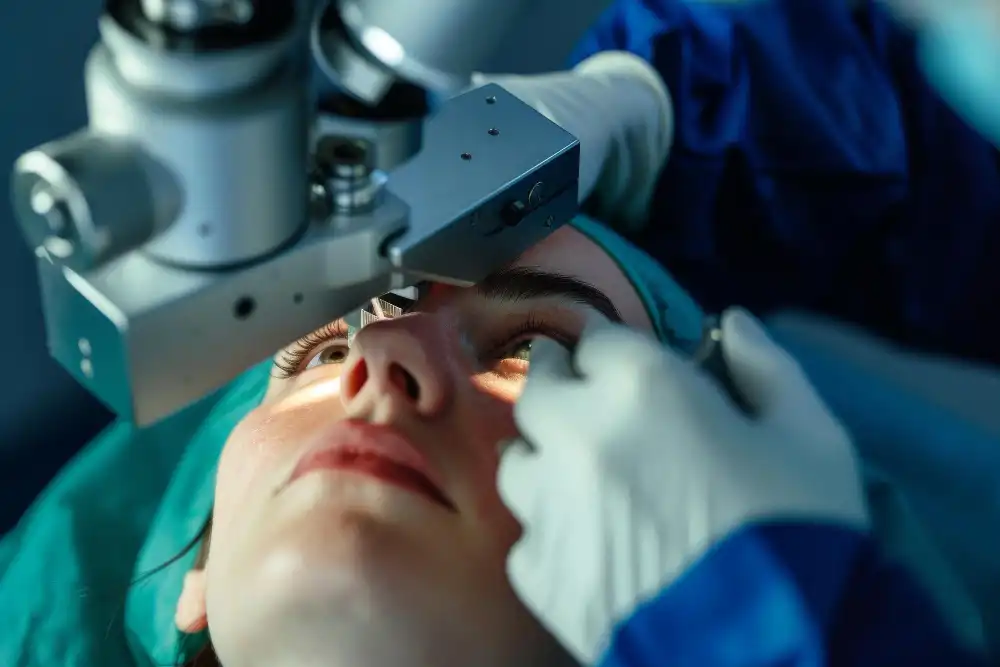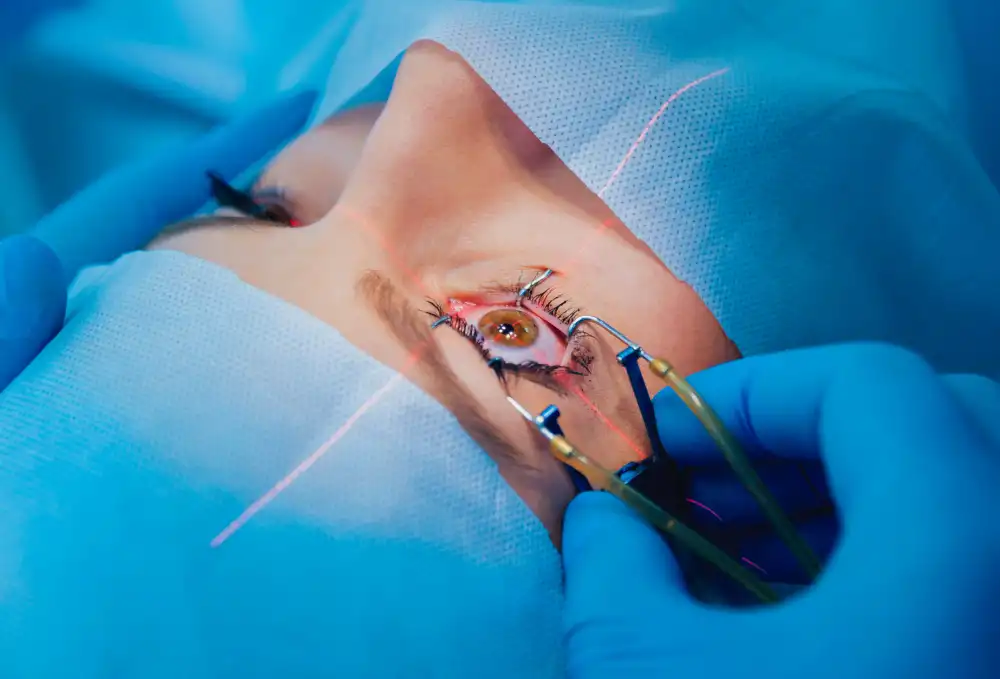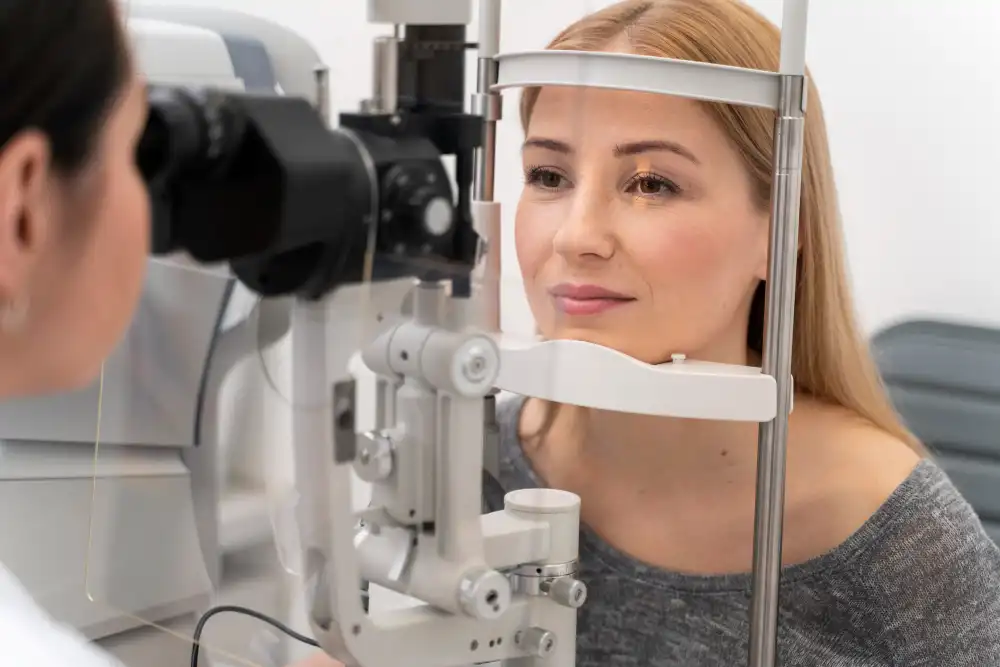
Are you tired of wearing glasses or contact lenses? Did you know you can get rid of them by going through a minor laser procedure? LASIK offers a lasting solution for several vision issues, such as nearsightedness. Studies reveal that 92% to 95% of patients who experience LASIK are satisfied with the results.
Thanks to advances in technology, there are now several types of LASIK surgery available. The right procedure depends on your specific vision problem and the unique characteristics of your eyes.
Let’s review what LASIK is, how it works, and its types. We will also review alternate treatments and compare all types of LASIK to determine which one is right for you.
What Is LASIK and How Does It Work?

LASIK, or Laser-Assisted In Situ Keratomileusis, is a laser eye surgery that is employed to correct eyesight errors, including:
- Nearsightedness
- Farsightedness
- Astigmatism
In this treatment, the laser is used to reshape the cornea and make it able to refract light precisely on the retina. Ultimately, you will get a clearer image without using glasses.
This is the fundamental procedure of LASIK. However, all types of LASIK are not the same. Various tools and laser technologies are used in different types of LASIK to fix eye problems.
Why There Are Different Types of LASIK Eye Procedures
Each eye problem is unique due to various factors like
- Corneal thickness
- Age
- Perception
Different types of LASIK have been introduced to deal with these multiple issues of the eyes. The kind of LASIK treatment is determined on the basis of the nature and structure of your eyes.
For instance, if your eyes have an irregular corneal shape or a thinner corneal surface, your doctor might recommend options like SMILE or PRK. These procedures are specifically designed to safely address these unique needs.
With this tailored approach, LASIK becomes the safest option for those looking for the best eye treatment.
Most Common Types of LASIK Eye Procedures Today

Here, we have explored the common types of LASIK eye treatment and the purposes for which they are used.
| Procedure | Best For | Recovery Time | FDA Approved | Notes |
| Standard LASIK | General use | 1–2 days | Yes | Uses a blade |
| Femto LASIK | Precision, less invasive | 1 day | Yes | Bladeless |
| Custom LASIK | High-definition correction | 1–2 days | Yes | Wavefront-guided |
| SMILE | High myopia, dry eyes | 1–2 days | Yes (some limits) | Flapless, minimally invasive |
| PRK | Thin corneas | 4–7 days | Yes | No flap, longer healing |
| LASEK / Epi-LASIK | Borderline cornea cases | 5–10 days | No | PRK alternatives |
| LBV | Presbyopia | 1–2 days | Yes | Monovision approach |
Standard LASIK (Traditional Blade LASIK)
This is the fundamental type of LASIK. In this method, a microkeratome blade forms a flap on the surface of the cornea. This blade is not available in all clinics, so this technique is only used in a few clinics. In some other places, this procedure is also done without this blade.
Bladeless LASIK (Femto LASIK / IntraLASIK)
This method is very similar to standard LASIK. In this method, a femtosecond laser replaces the blade to create a flap. This laser makes a flap more precisely than traditional LASIK and reduces the flap-related complications. Moreover, it also increases the recovery time.
Custom LASIK (Wavefront-Guided)
In this type of LASIK, wavefront technology measures the imperfection and margin to reshape the cornea for better visibility. This is a very accurate treatment type as it efficiently reshapes the cornea and reduces other effects, including:
- Haloes
- Night glares
- Blurred vision
Contoura Vision (Topography-Guided LASIK)
This treatment is best for people having
- Complex corneal issues
- Suboptimal LASIK outcomes
- Astigmatism
In Contoura Vision (Topography-Guided LASIK), advanced tools are used to create a highly detailed map of your cornea. This allows surgeons to identify even the most minute surface irregularities that traditional LASIK might miss.
Once these imperfections are mapped, a customized treatment plan is created to reshape the cornea precisely. This results in improved visual outcomes and fewer side effects like glare or halos.
Some key methods used during this treatment include:
- Corneal Topography
- Wavefront Analysis
- Excimer Laser Reshaping
SMILE (Small Incision Lenticule Extraction)
SMILE is a gentle, flapless laser procedure that removes a small, lens-shaped layer from within the cornea through a tiny opening. This process reshapes the cornea to improve vision.
It is particularly beneficial for people with strong nearsightedness or dry eye conditions and usually results in a faster recovery period.
PRK (Photorefractive Keratectomy)
PRK predates LASIK and remains a viable option, especially for people with thin or irregular corneas. Rather than forming a flap, the outer layer of the cornea is excised and subsequently regenerates during the healing process. Though the healing time is longer, it preserves more corneal tissue.
LASEK & Epi-LASIK
These are surface-based alternatives to PRK. LASEK uses an alcohol solution to loosen the corneal epithelium, while Epi-LASIK uses a mechanical separator. Both options prevent flap creation and are suitable for patients who are not candidates for traditional LASIK.
LBV (Laser Blended Vision)
LBV is designed to treat presbyopia, an aging condition affecting near vision. This method adjusts one eye for distance vision and the other for close vision.
Alternate Treatment Types to Consider
Despite the availability of various LASIK types, some people are not candidates for it. For such people, there are alternative eye treatments that are explained below.
EVO ICL (Implantable Collamer Lens)
If you have a very high prescription or thin corneas that may not be suitable for laser surgery, EVO ICL offers an effective option. This procedure places a soft, flexible lens inside the eye, situated between the iris and your natural lens. Since it does not involve reshaping the cornea, EVO ICL is considered reversible and preserves the eye’s natural structure.
Refractive Lens Exchange (RLE)
RLE is commonly recommended for those aged 45 and older. This procedure involves the removal of the eye’s natural lens and its replacement with an artificial intraocular lens. Similar to cataract surgery, RLE can correct significant age-related vision changes, including presbyopia. It may also help prevent cataract development.
How to Choose the Right LASIK Procedure for You
Choosing the most suitable laser eye surgeries types, begins with a comprehensive eye exam. During this visit, your ophthalmologist will:
- Conduct corneal thickness tests
- Create a corneal topography
- Assess your refractive error and eye health history
Based on the findings, your eye surgeon will recommend the safest and most effective treatment. It is important to consult only board-certified ophthalmologists using FDA-approved technologies.
Final Thoughts
LASIK is a common eye treatment for sight problems. It uses the technique of reshaping the cornea for optimal vision. However, various types of LASIK are introduced based on factors like dryness, age, or perception issues. These types are suitable for different people for different reasons.
To determine the best-suited type of LASIK, your doctor will analyze your eyes and suggest the right option for you. If LASIK isn’t suitable for you, there are other options available, such as EVO ICL and Refractive Lens Exchange.
If you are looking for the best place to consult a specialist and get eye LASIK surgery, visit Texan Eye Care.
